
1
Pheasant Run Golf Club Business Plan
Period: 2008 - 2012
A division of Canton Leisure Services
46500 Summit Parkway
Canton, MI, 48188
Phone: 734-397-6460
Fax: 734-397-6801
Web Site: leisure.canton-mi.org

2
Table of Contents
________________________________________________________
Executive Summary 3
History 3
Organization Overview 3
Division Action Plan 6
Division Guiding Principles 6
Division Objectives 6
Vision of the Future 7
Operations 8
Summit on the Park Identity 8
Organization Structure 9
SWOT Analysis 10
Competition 11
Marketing 12
Product Mix 12
Advertising and Promotions 13
Target Market Summary 14
Market Assessment 15
Demographics 15
Market Identification 17
Market Objectives 17
Market Trends 18
Financial plan 22

3
Executive summary
History of Pheasant Run
• Arthur Hills and Associates designed course, built in 1995
• 18 hole, 7,000 yard championship course (4 sets of tees)
• In 2000 the Parks and Golf Division was separated into two unique
components with 3 full time and 40 part time and seasonal employees.
• Additional 9 holes built in 2002 allowing for greater flexibility, league play,
ability to host outings up to 216 players from 144 players previously.
• Continued growth in revenue and number of rounds
• Contract developed with outside agency (Natural Golf) to provide lessons (golf
school) at the golf range.
• In-house contracted instructors
• Current Golf Pro under contract
• Course affiliations: National Golf Foundation – USGA – GAM – PGA - GCSAA
Ecological and Community Benefits of the Golf Course.
• Recreation places for golf and non-golf activities such as jogging, walking,
cross country skiing and bird watching during non-play periods
• A place for social interaction and community events
• Community improvements that add value to land
• A business that provides skilled and semi-skilled jobs
• Provide “green space” in urban setting
• Wetland preservation areas
• Sanctuary habitats for wildlife and birds
• Turf grasses that create oxygen, air cooling and filters for ground water
• Housing bordering the course valued at $800,000
Organizational Overview
Pheasant Run Golf Club is a 27-hole championship municipal facility owned and
operated by the Charter Township of Canton. The golf course is operated under the
Leisure Services department of Canton Township. The department director oversees
the management team which consists of (1) Golf Professional and (1) Golf Course
Superintendent.
The facility vision is to provide a quality golf experience at affordable rates to the
Canton community and surrounding areas. Pheasant Run provides its customers
with an excellent services and amenities while remaining fiscally responsible and
meeting financial goals. Staff members work as a well trained team to accomplish
goals in-line with department vision.

4
Pheasant Run not only seeks to offer a well maintained course at affordable rates, but
also programs and events that foster growth in the game. The following key statistics
provide insight into a typical year at Pheasant Run.
2007 Events & Statistics
Pheasant Run hosted:
13 Charity Outings
78 Golf Outings
10 Competitive Tournaments
7 Women’s Golf Clinics
1 Junior Golf Camp
1 Junior Golf Academy
1 Family Day
10 Leagues
2 Demo Days
6 Free Instructional Clinics
Key Statistics:
37,688 Rounds Played
55,223 Point of Sale
Purchases
142 Annual Pass Holders
9,177 Range Buckets Sold
231 Days Played
3,234 Hours in Operation
The course, along with offering unique programs and events, operates at very
efficient levels. National averages for utilization rates vary from 46%-55% while
Pheasant Run operates over 50% for the season and over 65% during the peak
season. The team at Pheasant Run looks to continue growth through enhancing
facilities, programs and opportunities for new customers.
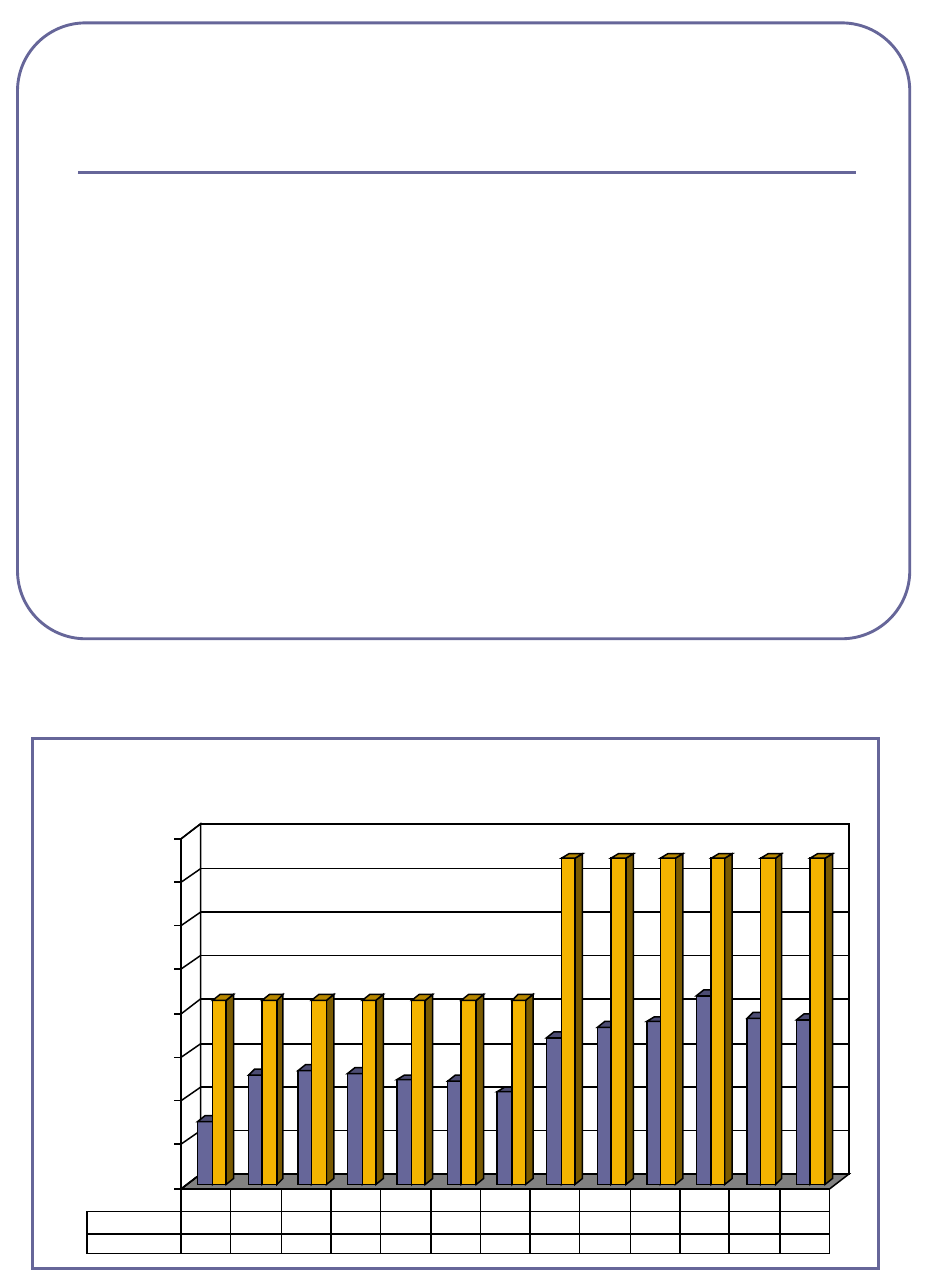
5
Revenue Enhancement
Maintain league program above 5500 rounds – 2008 estimate = $150,000
Maintenance and additions of Annual Memberships – 2008 estimate = $205,000
Advertisements in local and regional media (Michigan Golf Show, Michigan Golf Publications,
On-air radio promotions)
Promotion of Junior tournaments, Junior Summer Golf Camp, Junior Golf Academy, Women’s
Golf Clinics, Women’s League, and Senior fees during non-peak hours
Grow customer base and wallet share through promotion of In house programs such as
Player Reward Card – Loyalty program and Customer Appreciation Days
Player Development - Continue At Your Leisure tapings for golf instruction
Continue partnering with PLAYGOLFAMERICA supporting programs such as Free Lesson
Month, Women’s Golf Month, and Golf Michigan Month.
Special Events
1.
Mother’s Day – Mom’s play Free
2.
Father’s Day special
3.
LibertyFest
4.
Member Tournaments
5.
Customer Appreciation Days & Promotions
6.
Monthly email specials
7.
Tailfeather’s mailing
8.
Member Appreciation Days
9.
Demo Days
10.
Player Reward Card
11.
Oktoberfest
Annual Rounds Played
0
10,000
20,000
30,000
40,000
50,000
60,000
70,000
80,000
Rounds
14,326
24,856
26,087
25,299
23,750
23,672
21,058
33,594
35,799
37,091
43,082
37,849
37,688
Potential Rounds
42,000
42,000
42,000
42,000
42,000
42,000
42,000
74,376
74,376
74,376
74,376
74,376
74,376
1995
1996
1997
1998
1999
2000
2001
2002
2003
2004
2005
2006
2007

6
Division Action Plan
Division guiding principles and division objectives are accomplished through division
actions plans developed for each division of Leisure Services. These plans outline
specific initiatives that will be implemented throughout the year to work toward
division and department goals.
Division Guiding Principles
Basic Description of Core Services: Maintain and elevate an upscale, twenty seven
hole, municipal golf course with a sense of professionalism, proven golfer satisfaction,
and a commitment to enhancing the environment while using Best Management
Practices.
• Maintain and enhance “Total Golf Experience”
• Create Country Club feel for public golfing customers
• Create opportunities through growth of the game initiative
• Customer service is #1 priority to every guest entering our facility
• Maintain affordable rates for golfing public
Action areas identified by staff during the development of the DAP are as
follows:
• Targeted programming
• Environmental programming
• “It’s the experience”
• Multiculturalism activities with partnership and coordination
• Arts and heritage in cooperation with the cultural commission
• Heritage Hub with historical society and Bartlett-Travis House
• Employee development
• Strategic use of resources
• Leisure Services Advisory Committee and other commissions
• Sponsorships
• Capital improvements
• Asset management
• Integrations of forms and plans
• Opportunities inventory
Division Objectives
The Balanced Scorecard concept is used as a measurement tool for the Leisure
Services Department. The balanced scorecard transforms our strategic plan from a
passive document into and active measurement toll for the organization. It provides a

7
framework that not only provides performance measurements, but helps planners
identify what should be done and measured.
Typically governments have performed financial measurement of the organization
through the budgeting process. The financial measures, however, are inadequate for
fully guiding and evaluating the journey through the information age that agencies
must make. Therefore, the balanced scorecard is based on collecting measurable
results from the following four perspectives: Customer, Financial, Operational, and
Employee.
Vision of the Future
Pheasant Run Golf Club offers an affordable golf experience to the golfing public.
The facility which is owned and operated by Canton Township prides itself on well
maintained golf course conditions from tee to green. The staff members at Pheasant
Run look to offer exceptional customer service before, during and after the round.
The goal for the increased revenue streams comes from increasing programs outside
of regular play. Annual passes, league play and outing revenues are sources that
continue to be targeted. With expenses expected to rise slightly over the coming
years with regards to salaries & wages, utilities, and course maintenance
applications, it is imperative to target other means of revenue other than regular play.
Competitive pricing coupled with the conservation of resources will help us toward our
goal of covering operating and capital expenses. Debt services may require
additional funds to be subsidized by Township’s general fund.
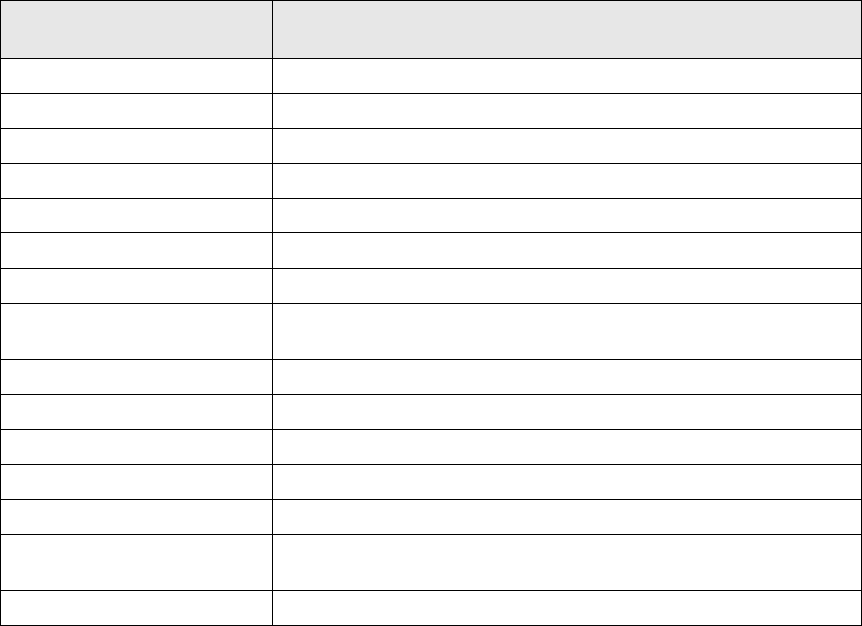
8
Operations
Pheasant Run Golf Club Identity
The identity of Pheasant Run is made clear by its logo, signage, advertising and
facility appearance. Pheasant Run is located at 46500 Summit Parkway, Canton MI,
48188.
Location Description
Immediate area
Type of area
Suburban community
Adjacent uses
Residential
Benefits
Central location in the community
Proximity
Customer type
Residents & Non-Residents of all demographics
Potential customers
24,750
Competitors
Northville Hills, Lakes of Taylor, Golden Fox,
Stonebridge
Accessibility
Close to major streets Near the intersection of Canton Center and Palmer
Easy entrance / exit
Three entries, three accessible
Visibility
From road
Easy to see, high copula visible
Appeal of exterior
Peaked copula with Pheasant on top, split faced
brick, numerous windows
Landscaping
Numerous flower beds with perennials & annuals
Operating hours
The Golf Course is open April – November with peak season times
Monday – Sunday 6:15 am – 11:00 pm

9
The organizational structure
Personnel
The Golf Pro is a contract position paid a portion of through part time pages, and a
portion through bonuses based on the performance of the pheasant run budget.
The 5-year projection for full time personnel is expected to show the following:
2008
2009
2010
2011
2012
Total
Operations
Headcount
2.5
2.5
2.5
2.5
2.5
2.5
Payroll
151,851
155,796
159,859
164,044
168,355
799,905
Bonuses
Payroll burden
60,740
62,318
63,944
65,618
67,342
319,962
Total cost
212,592
218,114
223,803
229,662
235,697
1,119,867
Overall total
Headcount
3
3
3
3
3
3
Payroll
151,851
155,796
159,859
164,044
168,355
799,905
Bonuses
Payroll burden
60,740
62,318
63,944
65,618
67,342
319,962
Total personnel
cost
212,592 218,114 223,803 229,662 235,697 1,119,867
Department Director
Park and Facility
Maintenance
Supervisor
Clerk II
Superintendent
Irrigation Tech
Golf Pro

10
SWOT Analysis
Strengths:
• World renown architect
• Practice facility
• Bent grass fairways
• Course maintenance and overall quality
• Guaranteed tee time/pace of play
• Many services for a public golf course
• Exceptional customer service
• New, easier fee structure
• Free/ample parking
• Competitive rates
• Knowledgeable staff
• Enhanced image
• New Golf Cart fleet
Weaknesses:
• Narrow course with houses on both sides (Although most fairways with houses
are wide. Hole #6 may be the exception.)
• “Municipal” golf course perception
• Small, narrow clubhouse (unaccommodating)
• Funding
Opportunities:
• Expansion of clubhouse
• Regional course closings; therefore obtain golf member or guest list from
closing clubs
• Offer unique programs through growth of the game initiative otherwise not
offered at competing facilities
11
Threats:
• Unstable financials
• Unstable economy
• Competition
• Discounting as a means of increasing rounds
• Downturn of golf industry
Competition
1. Golden Fox – upscale public, privately owned
2. Northville Hills - upscale public, privately owned
3. Stonebridge – public, daily fee, privately owned
4. Links of Novi – public, daily fee, privately owned
5. Tanglewood – public, daily fee, privately owned
12
Marketing
Pheasant Run Golf Club product mix
Facilities:
• 320 acre, 27 hole golf course intermingled between single-family homes, native
areas and wetlands.
• Pen cross bent grass tees, greens and fairways connected by 10.5 miles of
paved cart paths
• Practice facility with bent grass teeing area, target greens, and 10,000 square
foot practice green
• 3,500 square foot clubhouse
• Restaurant/grill with sandwiches, beverages, snacks and banquet services and
seating for 60 (bar and pro shop)
Programs:
• Outings
• Leagues
• Corporate and Individual
1. Annual Pass Program
2. Single
3. Family
4. Corporate
Services
• Custom club fittings
• Lessons
• Ladies and Junior Clinics
• 10 minute tee times
• PGA professional staff
• Rental Clubs
• Community events
• Starters/Rangers
• Limited bag service
• Beverage cart on course
Products
• Fully stocked pro shop
• “Pro Line” golf apparel
13
Advertising and promotion
Public Relations
• Press release on increase of female golfers and what PRGC is doing to reach
this market.
• Monthly column in Canton Observer relating to golf, Canton employees etc.
• Write press releases on large events at PRGC i.e. St. Joseph Pro Am,
Chamber outing
• Sports radio advertisement (trade and promotion with them)
• Cross market with all CLS departments.
• Continue with informational emails to golfer database with course updates
• Create a promotional CD/Vide to use as a marketing tool
• Member newsletters
Community Relations
• Utilize of an on-site comment log (CIT)
Promotional
• Provide custom divot tool to all guests
• Provide neighboring communities with senior programs that lack a golf course
with coupons for their seniors to golf at Pheasant Run.
• Provide golfers with loyalty punch card – limited life span
Advertising
• Advertise in golf magazines (e.g. Michigan Links, Michigan Publixer)
• Golf insert in Detroit News and Ann Arbor News
• Partner with Michigan Tourism – place information in the Travel Stops on local
highways.
• Use NGF golfer database to implement at course, acquires spending power of
individual golfers
Direct Sales
• Host a display booth at companies
• Conduct cold calls to corporations that may have outings (e.g. Yazaki, UAW,
Chamber members, etc.) and take collateral to share.
• Conduct presentations to corporate sponsored sports groups, Toastmaster,
Business Network etc.

14
Quality Service/ Stewardship
• Send key staff to sales training
• Develop a survey tool/evaluation for event planners to complete after the
outing
• Develop quantitative measures on guest satisfaction card that is placed on the
golf cart.
• Send birthday cards to Annual Pass holders
Distribute each ‘clinic’ participant a coupon
• Train staff to be accepting of all demographics
• Train staff to teach appropriate golf etiquette
• Create Pheasant Run Ambassador Program
Existing Marketing Materials and Image
Website
Direct mail or e-mail to pass holders
Annual Pass Holder kick off party/season ending party
Michigan golf guides
Golf score cards
Yellow pages (one ad in W/NW)
Signage
Discover Guide book
Collateral folder for walk-in enquiries
Discover Leisure Newsletter
Michigan golf show
Newsletter to annual pass holders
Vertical Response Monthly (Biweekly) to database
Outing package
Collateral folder for walk-in inquiries
Community Resource Guide
Players pass – discount program
Yardage books on carts cost $3,000 in 2006
Michigan Publixer magazine
Michigan Links magazine Course Directory
GAM Discount Program (National Golf Foundation)
Membership Dues (PGA,GAM,GCSSA, Chamber etc.)
Customer Appreciation Days
OnLine Booking System
Target Market Summary
Current Market Segments (segmentation based on age, gender, experience versus
benefits sought)
• Swingin’ Seniors: older females, frequent golfers, frequent private course play.
• Junior Leaguers: younger females, third highest household income, not highly
competitive.
• Tank Tops n’ Tennis Shoes: young males, infrequent play, extremely price
sensitive, not disposed to take lessons.

15
• Public Pundits: young males, frequent public golf course play, price sensitive.
• Preoccupied Players: young males, infrequent play, second-highest household
income, not avid golfers.
• Country Club Traditionalist: older males, highest average household income,
biggest spenders on golf, frequent private course play, most likely to take
lessons.
• Pull Carts: oldest males, mostly retired, very frequent public course play, spend
slightly above average on golf.
• Dilettante Duffers: average frequency of play, interest in best equipment,
opinion leader, tries new equipment first.
Market Assessment
• Michigan ranks #1 in daily fee/municipal golf courses with 704 followed by
Florida (623) and California (621)
• Wayne County has 34 daily fee/municipal courses. The border counties of
Livingston (17), Washtenaw (21), and Oakland (55) combine to total 127 daily
fee/municipal courses within the 4 county areas. This represents 18% of the
total public/municipal golf courses in the state.
• In 2006, 2 new public courses opened in the state – down from 3 in 2005, 4 in
2004, 9 in 2003, 10 in 2002, and 17 in 2001.
• There are nearly 435,000 golfers in the Detroit Metropolitan area. 195,000 of
the 435,000 are core golfers.
• The total number of adult golfers rose from 27.3 million to 28 million. Core
golfers, which account for 91% of total rounds dropped from 12.8 million to
12.5 million. Core golfers are adults, 18 and over, who play at least 8 rounds
per year.
• Average golf fee revenue per round is approximately $25 nationwide.
Pheasant Run’s $30.
• Utilization rates nationwide average between 46% - 55% and are figured as the
amount of rounds played vs. rounds available. Pheasant Run operates over
50% for the year and over 65% during the peak season of May through
September.
Demographics
Prior to 1960, Canton Township was primarily an agricultural community and had a
population of only 5,313. With a population growth of more than 420 percent since
1970, Canton is now home to over 86,000 people. According to SEMCOG estimates,
Canton’s population is projected to exceed 98,793 by the year 2035.
Understanding the make up of the community is vital to success in the delivery of
services. Leisure Services staff are required to regularly review demographic
information to ensure that the facilities, programs and services provided are of interest
to, and meet the needs of, our residents.
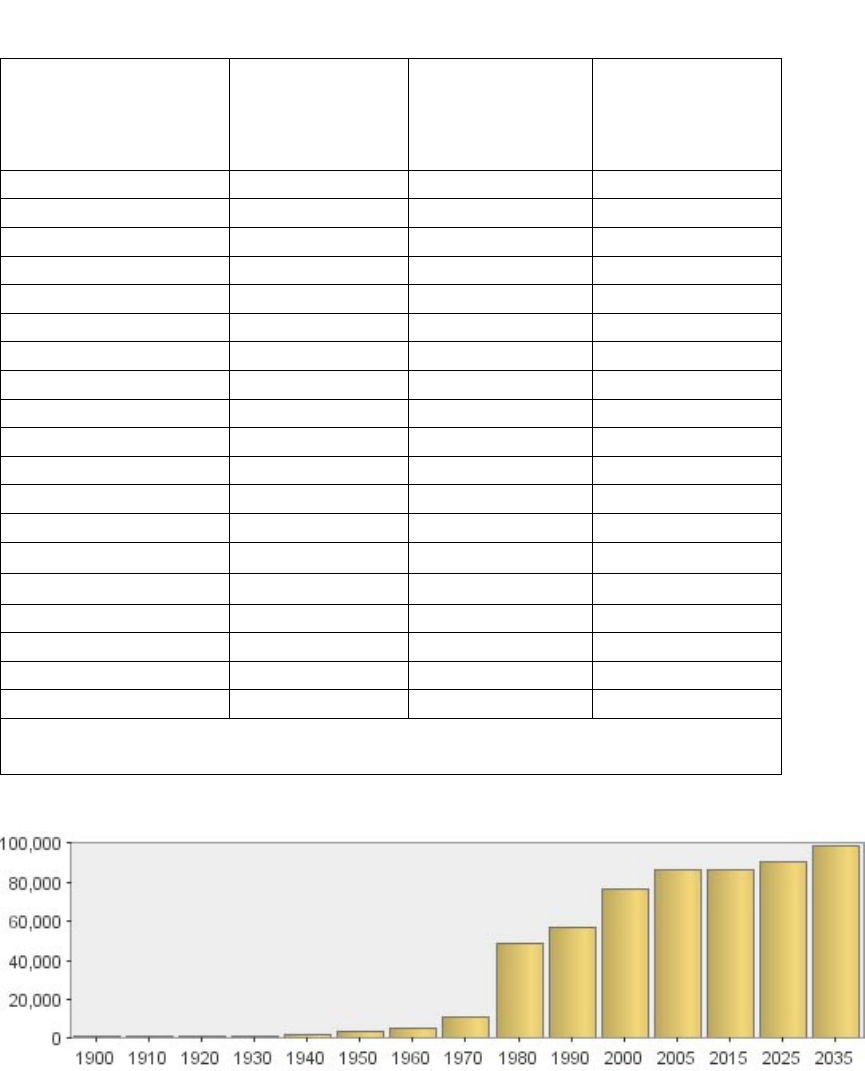
16
Canton Community Population
Total population
2000
(SEMCOG)
2005 American
FactFinder %
Estimates
2008 SEMCOG
Population
based on %
Estimates
Under 5 years
6,715
9.40%
8,004
5 to 9 years
6,606
9.60%
8,173
10 to 14 years
5,670
9.10%
7,747
15 to 19 years
4,982
4.60%
3,916
20 to 24 years
4,286
4.40%
3,746
25 to 29 years
5,346
4.60%
3,916
30 to 34 years
6,938
7.80%
6,640
35 to 39 years
7,619
10.40%
8,854
40 to 44 years
6,786
9.90%
8,428
45 to 49 years
5,945
8.00%
6,811
50 to 54 years
5,484
7.00%
5,959
55 to 59 years
3,520
5.70%
4,853
60 to 64 years
1,938
2.60%
2,213
65 to 69 years
1,385
1.80%
1,532
70 to 74 years
1,193
1.50%
1,277
75 to 79 years
958
1.50%
1,277
80 to 84 years
620
1.40%
1,192
85 years and over
375
0.70%
596
Total
76,366
100.00%
85,134
Source: SEMCOG (total popluation) & American FactFinder (age %
estimates)

17
Canton - Percentage of Population by Race
Race
1990
Census
2000
Census
2008 Estimated
White
52,374
(91.8%)
62,846
(82.3%)
64,106
(75.3%)
Black
1,155
(2.0%)
3,434
(4.5%)
6,470
(7.6%)
Asian or Pacific
Islander
2,532
(4.4%)
6,648
(8.7%)
12,259
(14.4%)
Hispanic, American
Indian & Other
1, 134
(1.43%)
3,438
(4.5%)
2,299
(2.7%)
Total Population
57,040
76,366
85,134
Source: SEMCOG (total population and 1990 & 2000 %) & 2005
American FactFinder (race % estimates)
Target Market ID
(Market segments based on age, gender and experience)
1. Outings
2. Corporate Transient
3. Non-Resident Males
4. Area Seniors
5. Resident Females
6. Resident Makes
Target Market Objectives
(Specific initiatives to achieve membership goals)
• Provide senior rates weekdays only and before 12:00 pm
• Conduct junior camps, promote early morning walking, and partner with junior
golf associations to provide competitions
• Provide lessons and etiquette programs and clinics
• Promote “twilight” rates and frequent player card
• Promote off-peak rates to relate with all customers
• Offer introductory rates or programs to draw new customers
• Continue to enhance annual golf pass and amenities included
• Promote golf course conditions (premier facility) that separate us from
competitors
• Offer new hard good inventory and demo programs with Demo Days
• Use PLAYGOLFAMERICA as a resource for program descriptions.
• Maintain current league program while adding league spots to designated tee
tiems
18
Market Trends
Canton Leisure Services takes a multi-faceted approach to identify trends that affect
the community. Tools used include: review of community demographics, focus group
input from our Leisure Services Advisory Committee and staff members, attendance
at educational conferences and seminars that address the topic, review of usage
patterns and popularity of program offerings and community input via surveys. Canton
Leisure Services must proactively respond to trends and issues in order to remain a
vital force in shaping Canton’s economic, social and environmental future. There are
several clear trends that may influence future operations and must be analyzed to
determine potential impact.
Trend 1 – Environmental Stewardship
Individuals are becoming aware of environmental issues and are placing a priority on
the preservation and protection of natural areas. Environmental stewardship is
defined as the maintenance and improvement of our environment for the benefit of
present and future generations. Stewardship requires sound and sensitive
management practices accomplished through the
preservation of wetlands
,
environmental education
,
environmentally friendly products
and conservation
of utilities
.
Trend 2 - Passive Recreation
Canton residents have ranked walking/hiking/nature trails as the number one park
facility need for the community. This was evident in visioning workshops conducted
for the development of the master plan for Patriot Park and from the 2005 Canton
Leisure Services Community Survey. Over 77% of survey respondents ranked trails
as their 1
st
or 2
nd
choice for new facilities in the community. A 2
nd
splash park, dog
park and community gardens also received high rankings as respondent choices. In
order to meet the meet the desired needs of the community, special focus should be
placed on the development of greenways, community gardens, provision of nature
education and a dog park.
Trend 3 - Health/Wellness
Health and wellness issues are at the fore front because of the increasing number of
unfit residents in Michigan and the economic impact of rising health care costs.
According to a study conducted by David Chenowith, PhD, one in four Michigan
residents is considered obese and at risk for chronic diseases like cancer, diabetes
and cardiovascular disease. Additionally, chronic diseases account for seven of
every ten U.S. deaths and for more than 60% of medical care expenditures. Lack of
physical activity and lack of leisure time are identified obstacles to improving health.
19
Leisure Services recognizes that the main focus is on prevention, and changing
lifestyles before an individual becomes a statistic.
Prevention, outreach and
support
are three critical factors believed to positively impact the overall health of the
community. Strategies will include: offering health screenings and a wide variety of
activity classes and health presentations to reach individuals at all fitness levels,
abilities, ages and days and times; inclusion of a health/wellness curriculum or event
in day camps, programs and special events; educate the community to make them
aware of resources that lend support and create opportunities to change health
behavior.
Trend 4 - Demographic, Social, Cultural
Canton has been one of the fastest growing communities in Southeast Michigan as
evidenced by the increase in population from the 2000 census. The Southeast
Michigan Council of Governments (SEMCOG) project that Canton’s population will
exceed 98,000 by 2030. CLS recognizes that it is imperative to understand Canton’s
demographics in order to provide services that are desired and meet the needs of the
community.
Boomers
Baby boomers have reshaped what it means to grow older. Compared with their
parents, boomers are healthier, better educated and living well into their 80’s and
beyond. The increasing lifespan has given boomers the chance to reinvent
themselves and pursue new passions at any age. As a whole, Boomers are more
affluent, tend to be more active than preceding generations and think of themselves
as younger than their parents at the same age. As they age, Boomers are shifting
from activities such as tennis and aerobics to less strenuous ones such as walking,
cycling, tai chi and yoga. Boomers are likely to live much longer and more than likely
boomer retirement will be a mix involving work, leisure and family. Canton Leisure
Services will need to provide a
diverse range of health/wellness
activities and other
programs at
varied times
to accommodate schedules and activity levels.
Millennials
A millennial is anyone born between 1981 and 2000 and there are over 75 million
today. Just as the baby boomers changed society, the sheer numbers of millennials
can do the same. Millennials are technically literate – technology has always been a
part of their lives. They expect instantaneous feedback and gratification. The 2006
Cone Millennial Cause Study cites that tragic world events such as 9/11, coupled with
recent natural disasters have motivated the Millennial Generation to develop a strong
social conscience. Technology has given them a loud and powerful voice.
Millennials have been referred to as the most civic-minded generation since World
20
War II. The Cone Study suggests that Millennials are the most socially-conscious
consumers to date. Sixty-one percent of survey respondents are currently worried
about the state of the world today and feel personally responsible to make a
difference. Millennials want to live in communities and work for businesses that care
about how it impacts or contributes to society. As millennials become adults, they will
be the next generation of Canton homeowners. Programs and services will need to
be offered that are appealing.
Easy
access to amenities
,
location to parks,
etc.,
varied communications methods
and
opportunities to give back to society
are
key.
Culture/Heritage
Nationally the population is becoming more ethnically and racially diverse. This is
reflective in Canton where the Asian and African American population has more than
doubled since the 2000 census. Increasing ethnicity provides opportunity to expand
cultural awareness, but also presents a challenge to overcome language and social
barriers. The
arts
can be utilized to bridge cultural gaps, provide connectivity and
promote cultural awareness and tolerance.
Historic preservation
will promote the
inclusion of heritage education.
Limited Discretionary Time
Society as a whole is experiencing less discretionary time and in smaller segments.
Programs and services should be offered in more
compressed time frames,
at “non-
traditional” times and with
drop-in options.
Outreach
Providing services throughout the community is important to reach the entire
community. A focus should be made to
partner with agencies to provide
recreation opportunities in identified at-risk areas
, and
provide services that
address identified parenting issues
such as child abuse, building character, etc.
Trend 5 - Technology
As technology continues to evolve and become integrated into our everyday lives,
Canton Leisure Services needs to stay current in order to provide more efficient and
convenient service. Technology should be used for
on-line purchases, virtual
tours, on-line support for health/wellness, marketing, enhanced
communication, facility security, and collection and management of data and
assets.
21
Trend 6 - The Changing Economy
According to University of Michigan economists hundreds of thousands of jobs,
mostly in manufacturing, have been lost since 2000. State-shared revenue has also
been reduced and a depressed housing market has adversely impacted taxable
values of property. These forces are requiring local municipalities to struggle with
budgets and often require them to find alternative funding sources. The Department
strives to properly maintain aging facilities, absorb rising fixed costs and enhance
services without increasing tax support. Canton Leisure Services needs to continue
to utilize the
cost recovery system
. Further development of
partnerships and
sponsorships
and expanded use of
volunteers
whenever possible will offset
expenses. The strategic use of resources and
analytical assessment of proposed
services and capital expenditures
will result in increased efficiency. By
building
an identity
and a reputation through
enhanced public awareness
and
credibility of
services
, the Department will ultimately be positioned as a necessity within the
Community.
Trend 7 - Higher Expectations of Service
Many adults today grew up with programmed recreation and continue to expect
services for themselves and their children. According to industry experts, hectic
schedules, family obligations and travel costs have resulted in an increased demand
for more flexible and convenient recreation opportunities. Dissatisfaction with the
economy, their perception of government and the inability to directly reach high
ranking (above local government) elected officials have created frustration. Residents
recognize that Canton officials and departments are accessible. By the nature of our
operation, Leisure Services staff is accessible and often deal with frustrated residents
who often have unreasonable expectations for customer service and unreasonable
demands on our facilities.
To combat this challenge,
effective customer service
is critical. Staff should
receive regular training on service standards and information and responses should
be provided to customers in a timely manner,
facility schedules
should be adjusted
in order to balance the need to generate revenue with rentals and community space
and member/drop-in time.
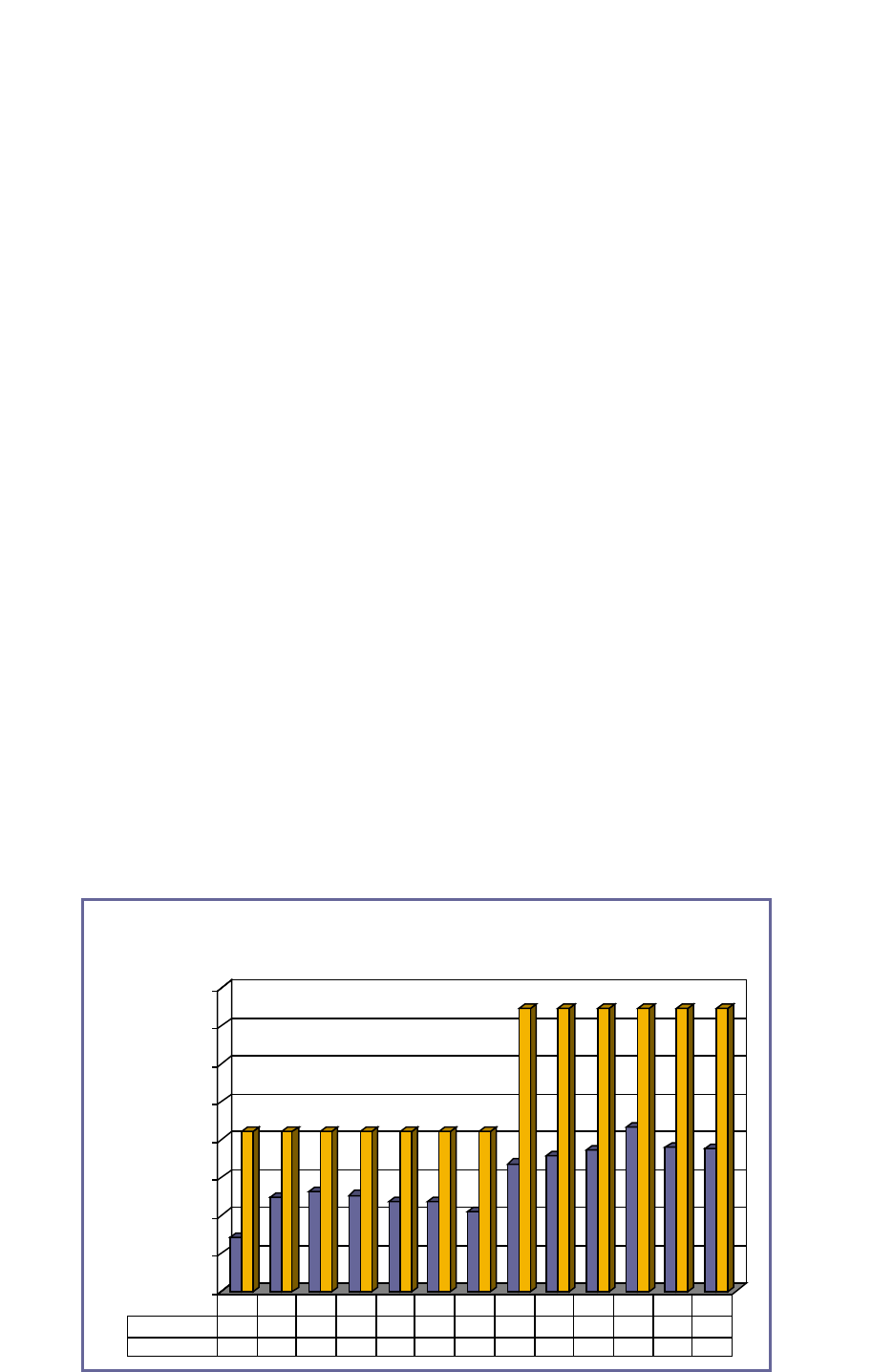
22
Financial plan
The goal for Pheasant Run to increase revenues annually by 3% will come from
increased participation in both Annual Golf Pass sales and the finding of new league
programs. Regular play may be increased by continuing customer loyalty programs
and through the offering of regular play incentives. Email and mailing list databases
must remain current with the offering of monthly incentives. Golf course maintenance
and turf conditions must stay at a premium as competition increases. Placing a high
priority on turf conditions and appearance will ensure to retain high levels of play
through the season.
Generated income (sales)
Revenue for the Pheasant Run can be broken down into three major categories: Golf
Green Fees, Range Fees, and Pro Shop Merchandise Fees.
Golf Green Fees include daily usage, league play and outings, Annual Pass Fees for
golf and range, Range Fees for daily usage, and Pro Shop Merchandise Fees through
hard and soft goods.
2005 2006 2007
Golf Green Fees $1,189,827 $1,078,212 $1,032,953
Range Fees $ 81,134 $ 67,030 $ 70,774
Pro Shop Merchandise $ 125,330 $ 106,748 $ 107,433
Operating Expenses $2,315,267 $2,131,084 $1,947,975
The target area for growth is with Annual Pass sales, leagues and off peak playing
times. Pheasant Run operates at 85-90% capacity on weekend morning with only 30-
40% capacity in the afternoons. This presents opportunities through incentive play
and reward programs.
Annual Rounds
0
10,000
20,000
30,000
40,000
50,000
60,000
70,000
80,000
Rounds
14,326
24,856
26,087
25,299
23,750
23,672
21,058
33,594
35,799
37,091
43,082
37,849
37,688
Potential Rounds
42,000
42,000
42,000
42,000
42,000
42,000
42,000
74,376
74,376
74,376
74,376
74,376
74,376
1995
1996
1997
1998
1999
2000
2001
2002
2003
2004
2005
2006
2007

23
Revenues Per Round
Player Profile for Rounds Played
$0.00
$5.00
$10.00
$15.00
$20.00
$25.00
$30.00
$35.00
$40.00
$45.00
Food & Beverage
$5.51 $5.39 $6.07 $5.65 $5.36
Pro Shop
$2.65 $2.73 $2.79 $2.72 $2.85
Additional Rev. per round
$8.16 $8.12 $8.96 $8.37 $8.21
Revenue per round
$30.61 $28.69 $29.60 $29.63 $27.40
Total Rev. per round
$39.37 $38.70 $40.24 $39.43 $37.49
2004 2005 2006 3yr Ave 2007
Outings
6%
Spring/Fall
9%
Staff
12%
Senior/Junior
7%
League
12%
Member
21%
Guest
16%
Resident
17%
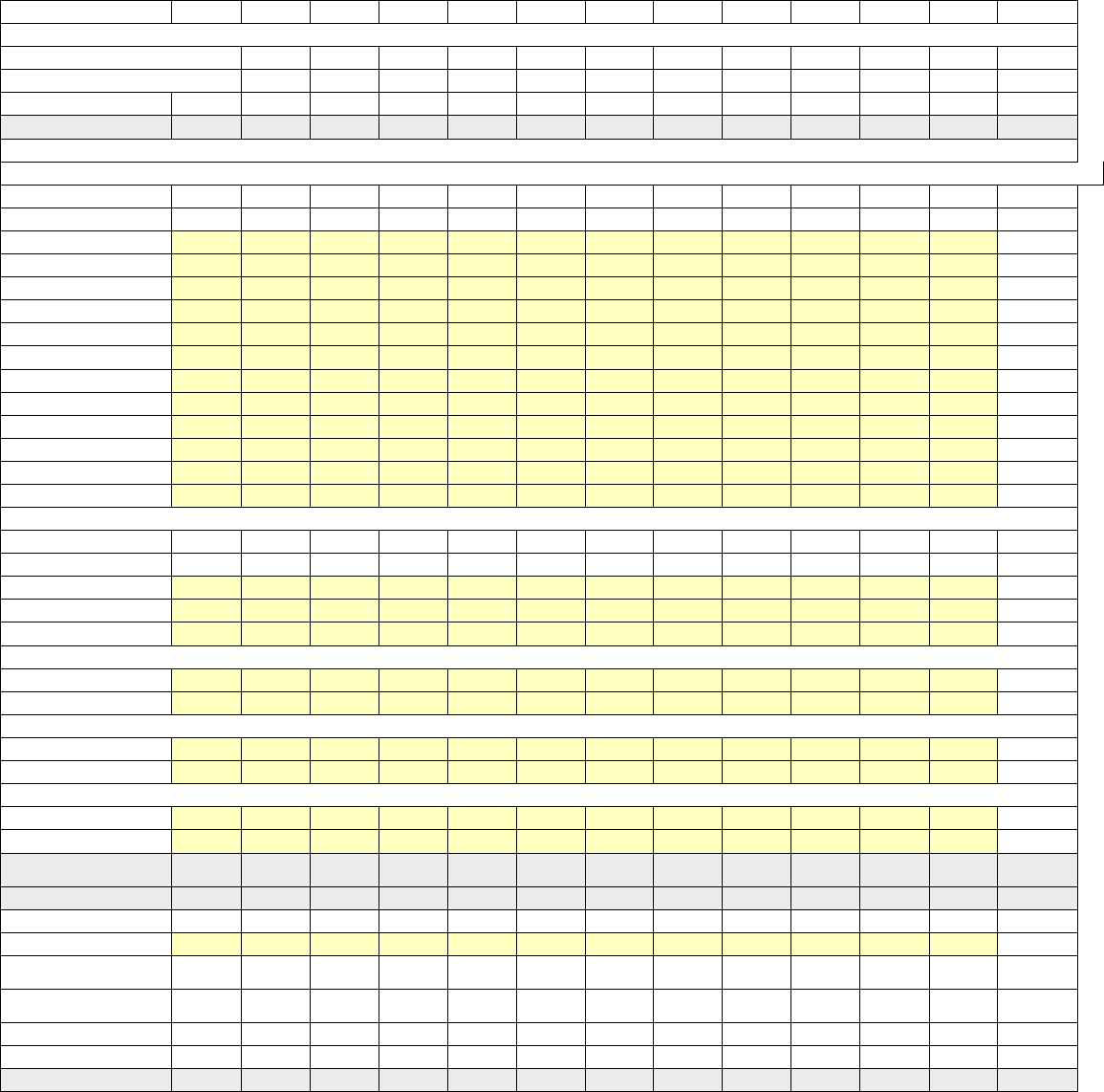
24
2008 Estimates
Month
Jan Feb Mar Apr May Jun Jul Aug Sep Oct Nov Dec
Total
Revenue
Total sales
2,515 4,431 25,535 205,244 175,123 194,983 251,911 180,495 131,931 106,830 34,130 69,774 1,382,902
Cost of goods sold
Gross profit
2,515 4,431 25,535 205,244 175,123 194,983 251,911 180,495 131,931 106,830 34,130 69,774 1,382,902
Operating expenses
General & Administrative
Bad debts
Losses & thefts
Credit Card Fees
989 2,478 2,128 2,238 4,968 5,281 1,003 3,101 22,186
Operating Supplies
225 1,096 5,941 4,258 2,482 5,151 2,793 2,117 1,677 126 134 26,000
Dues and licenses
125 125 125 125 125 125 125 125 125 125 125 125 1,500
Utilities
2,667 2,667 2,667 2,667 2,667 2,667 2,667 2,667 2,667 2,667 2,667 2,667 32,000
Mag/subscriptions
46 46 46 46 46 46 46 46 46 46 46 46 550
Maintenance/repairs
5,951 7,078 29,672 25,458 57,636 32,500 46,707 36,961 20,740 22,605 11,471 5,251 302,030
Office expenses
167 167 167 167 167 167 167 167 167 167 167 167 2,000
Contracted Services
2,645 2,645 2,645 2,645 2,645 2,645 2,645 2,645 2,645 2,645 2,645 2,645 31,740
Supplies for Resale
241 28,762 42,207 3,776 12,439 3,967 917 204 58 4,429 97,000
Other
3,104 3,104 3,104 3,104 3,104 3,104 3,104 3,104 3,104 3,104 3,104 3,104 37,250
Telephone/fax/mail
167 167 167 167 167 167 167 167 167 167 167 167 2,000
Equipment Lease
2,083 2,083 2,083 2,083 2,083 2,083 2,083 2,083 2,083 2,083 2,083 2,083 25,000
Personnel
Salaries and benefits
12,654 12,654 12,654 12,654 12,654 12,654 12,654 12,654 12,654 12,654 12,654 12,654 151,851
Payroll burden
5,062 5,062 5,062 5,062 5,062 5,062 5,062 5,062 5,062 5,062 5,062 5,062 60,740
PT Wages
5,916 11,426 19,504 22,830 35,380 43,167 41,910 58,201 29,260 26,185 21,335 30,118 345,232
Overtime
3,813 3,813 3,813 3,813 3,813 3,813 22,880
PT Fringes
592 1,143 1,950 2,283 3,538 4,317 4,191 5,820 2,926 2,619 2,134 3,012 34,523
Sales promotion
Advertising/promotion
1,417 1,417 1,417 1,417 1,417 1,417 1,417 1,417 1,417 1,417 1,417 1,417 17,000
Printing & Publishing
1,417 1,417 1,417 1,417 1,417 1,417 1,417 1,417 1,417 1,417 1,417 1,417 17,000
Insurance
Liability insurance
1,667 1,667 1,667 1,667 1,667 1,667 1,667 1,667 1,667 1,667 1,667 1,667 20,000
Other insurance
Transportation
Travel
Transportation
442 2,852 4,160 9,411 4,097 1,131 22,093
Total operating
expenses
45,678 54,321 114,646 141,082 147,909 143,586 143,056 147,824 92,280 91,644 69,288 79,264 1,270,575
EBITDA
-43,163 -49,890 -89,111 64,162 27,214 51,397 108,855 32,671 39,651 15,186 -35,158 -9,490 112,327
Depreciation
7,617 7,617 7,617 7,617 7,617 7,617 7,617 7,617 7,617 7,617 7,617 7,617 91,400
Amortization
Interest on short
term loans
Interest on long term
loans
Deferred loan interest
Flexible loan interest
Net business result
-50,780 -57,507 -96,727 56,546 19,598 43,780 101,239 25,055 32,035 7,570 -42,774 -17,107 20,927
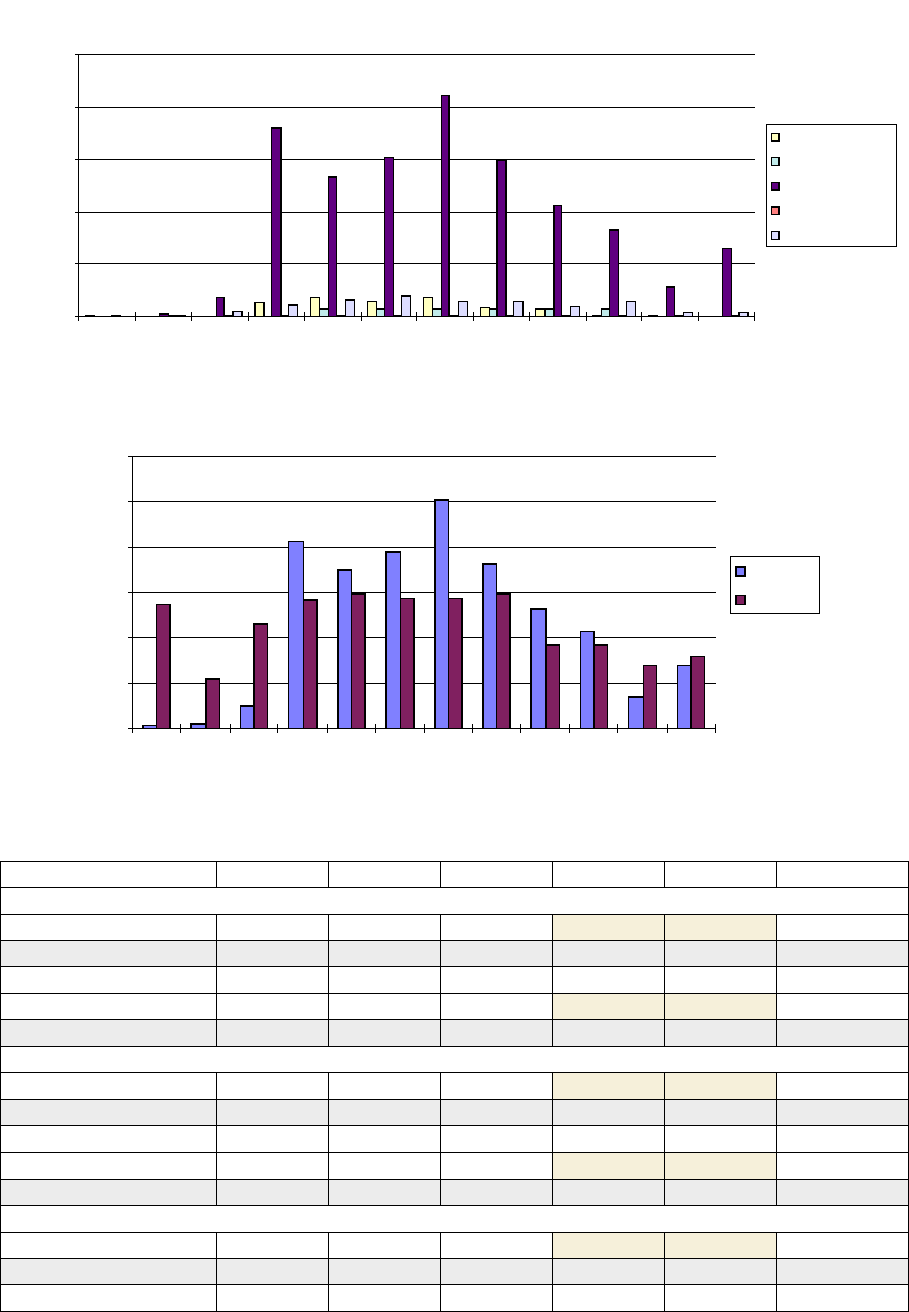
25
Sales/month per productline
year 1
0
50,000
100,000
150,000
200,000
250,000
Jan Feb Mar Apr May Jun Jul Aug Sep Oct Nov Dec
Driving Range
Food & Beverage
Greens Fees
Other Revenue
Pro Shop
Cash in / Cash out per month
year 1
0
50,000
100,000
150,000
200,000
250,000
300,000
Jan Feb Mar Apr May Jun Jul Aug Sep Oct Nov Dec
Cash in
Cash out
Sales Estimates
2008
2009
2010
2011
2012
Total
Driving Range
Range Fees 85,100 87,653 90,283 92,991 95,781 451,807
Net sales
85,100
87,653
90,283
92,991
95,781
451,807
Cost of goods
Cost of goods %
Gross profit 85,100 87,653 90,283 92,991 95,781 451,807
Food & Beverage
Commission 45,000 46,350 47,741 49,173 50,648 238,911
Net sales 45,000 46,350 47,741 49,173 50,648 238,911
Cost of goods
Cost of goods %
Gross profit
45,000
46,350
47,741
49,173
50,648
238,911
Greens Fees
Greens Fees 1,128,402 1,162,254 1,197,122 1,233,035 1,270,026 5,990,839
Net sales
1,128,402
1,162,254
1,197,122
1,233,035
1,270,026
5,990,839
Cost of goods
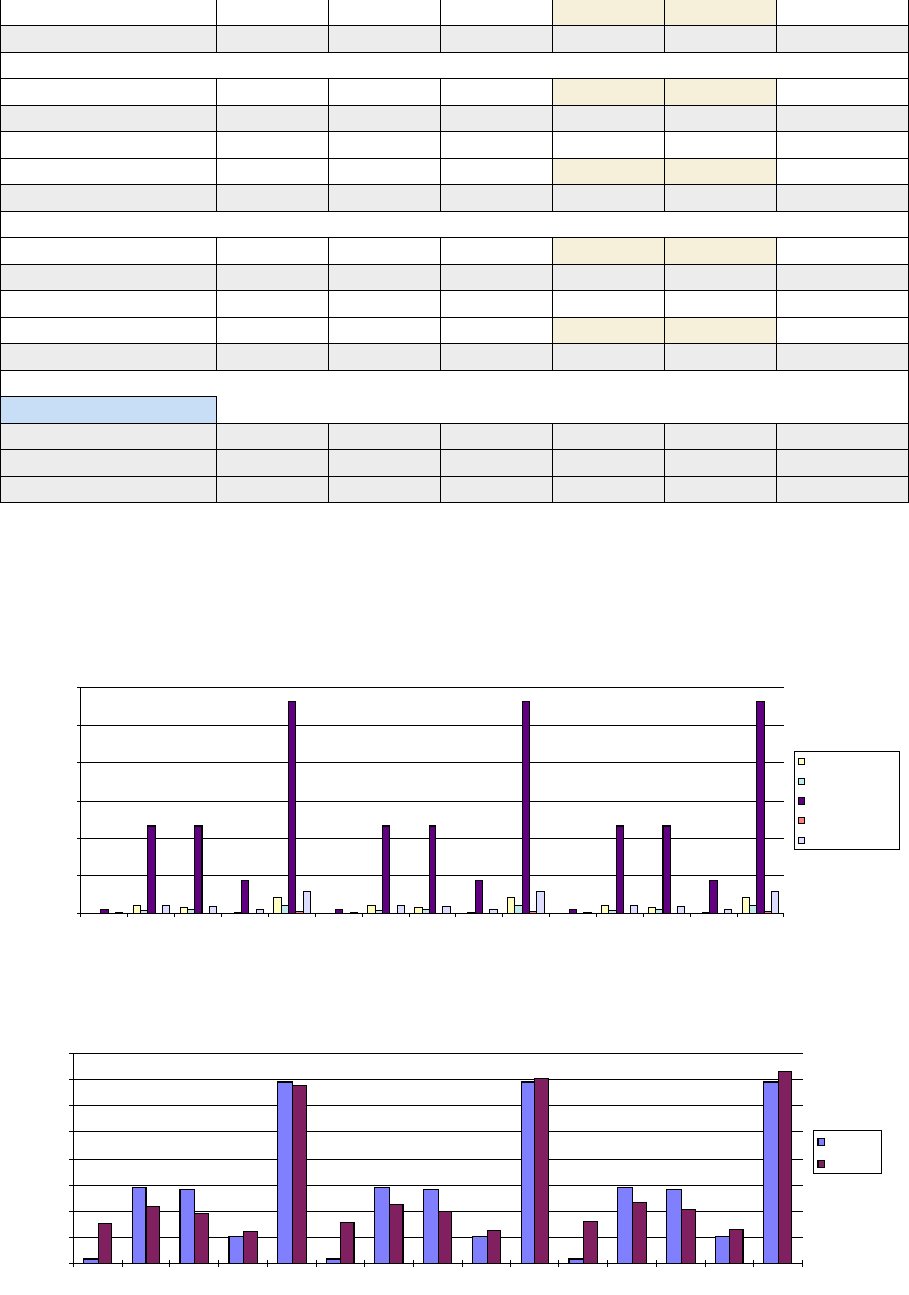
26
Cost of goods %
Gross profit 1,128,402 1,162,254 1,197,122 1,233,035 1,270,026 5,990,839
Other Revenue
Misc Revenue
9,000
9,270
9,548
9,835
10,130
47,782
Net sales 9,000 9,270 9,548 9,835 10,130 47,782
Cost of goods
Cost of goods %
Gross profit
9,000
9,270
9,548
9,835
10,130
47,782
Pro Shop
Product Sales 115,400 118,862 122,428 126,101 129,884 612,674
Net sales 115,400 118,862 122,428 126,101 129,884 612,674
Cost of goods
Cost of goods %
Gross profit 115,400 118,862 122,428 126,101 129,884 612,674
Overall total sales
Total net sales 1,382,902 1,424,389 1,467,121 1,511,134 1,556,468 7,342,015
Total cost of goods
Total gross profit 1,382,902 1,424,389 1,467,121 1,511,134 1,556,468 7,342,015
Sales/quarter per productline
3 years
0
200,000
400,000
600,000
800,000
1,000,000
1,200,000
1st qtr. 2nd qtr. 3rd qtr. 4th qtr. 2008 1st qtr. 2nd qtr. 3rd qtr. 4th qtr. 2009 1st qtr. 2nd qtr. 3rd qtr. 4th qtr. 2010
Driving Range
Food & Beverage
Greens Fees
Other Revenue
Pro Shop
Cash in / Cash out quarterly
3 years
0
200,000
400,000
600,000
800,000
1,000,000
1,200,000
1,400,000
1,600,000
1st qtr. 2nd qtr. 3rd qtr. 4th qtr. 2008 1st qtr. 2nd qtr. 3rd qtr. 4th qtr. 2009 1st qtr. 2nd qtr. 3rd qtr. 4th qtr. 2010
Cash in
Cash out
